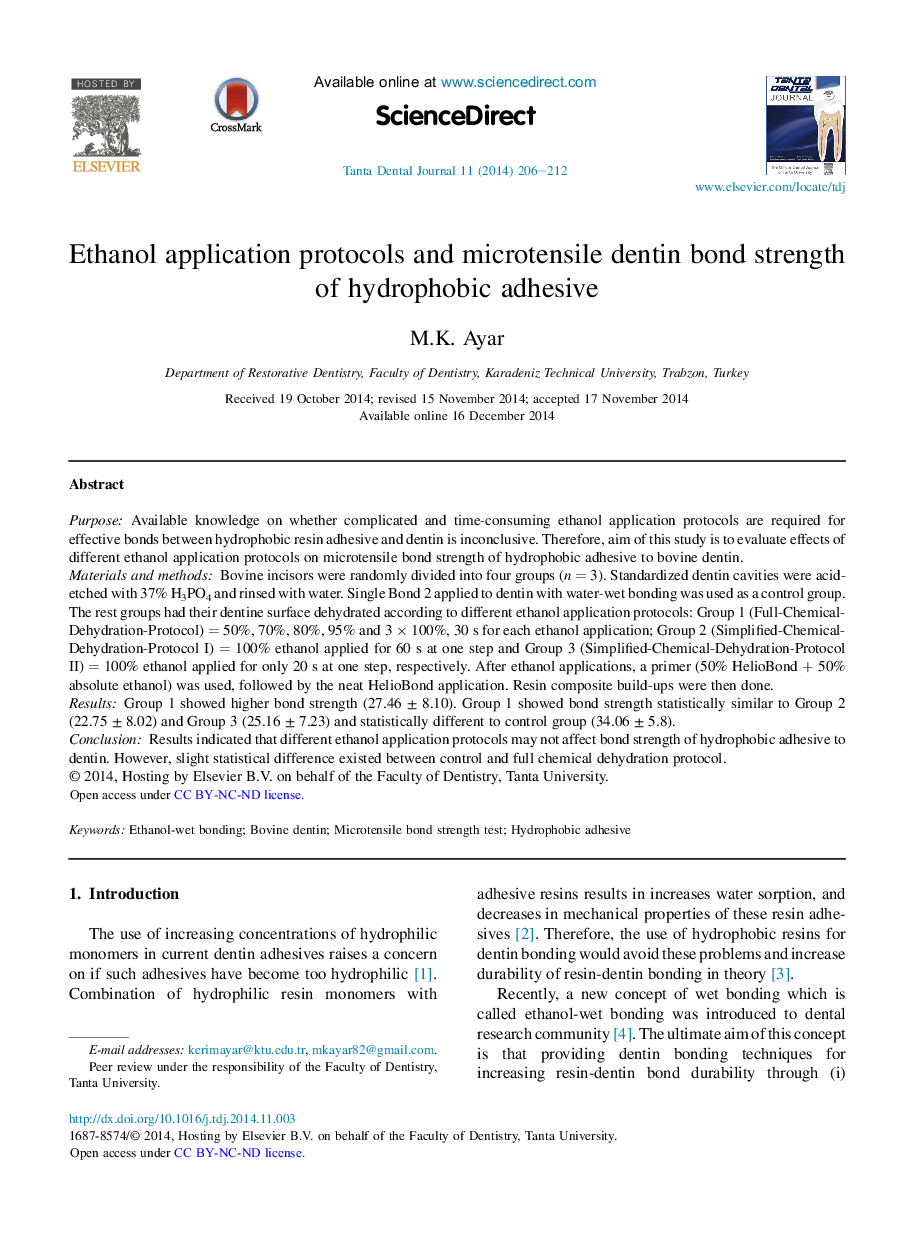| Article ID | Journal | Published Year | Pages | File Type |
|---|---|---|---|---|
| 3179672 | Tanta Dental Journal | 2014 | 7 Pages |
PurposeAvailable knowledge on whether complicated and time-consuming ethanol application protocols are required for effective bonds between hydrophobic resin adhesive and dentin is inconclusive. Therefore, aim of this study is to evaluate effects of different ethanol application protocols on microtensile bond strength of hydrophobic adhesive to bovine dentin.Materials and methodsBovine incisors were randomly divided into four groups (n = 3). Standardized dentin cavities were acid-etched with 37% H3PO4 and rinsed with water. Single Bond 2 applied to dentin with water-wet bonding was used as a control group. The rest groups had their dentine surface dehydrated according to different ethanol application protocols: Group 1 (Full-Chemical-Dehydration-Protocol) = 50%, 70%, 80%, 95% and 3 × 100%, 30 s for each ethanol application; Group 2 (Simplified-Chemical-Dehydration-Protocol I) = 100% ethanol applied for 60 s at one step and Group 3 (Simplified-Chemical-Dehydration-Protocol II) = 100% ethanol applied for only 20 s at one step, respectively. After ethanol applications, a primer (50% HelioBond + 50% absolute ethanol) was used, followed by the neat HelioBond application. Resin composite build-ups were then done.ResultsGroup 1 showed higher bond strength (27.46 ± 8.10). Group 1 showed bond strength statistically similar to Group 2 (22.75 ± 8.02) and Group 3 (25.16 ± 7.23) and statistically different to control group (34.06 ± 5.8).ConclusionResults indicated that different ethanol application protocols may not affect bond strength of hydrophobic adhesive to dentin. However, slight statistical difference existed between control and full chemical dehydration protocol.
